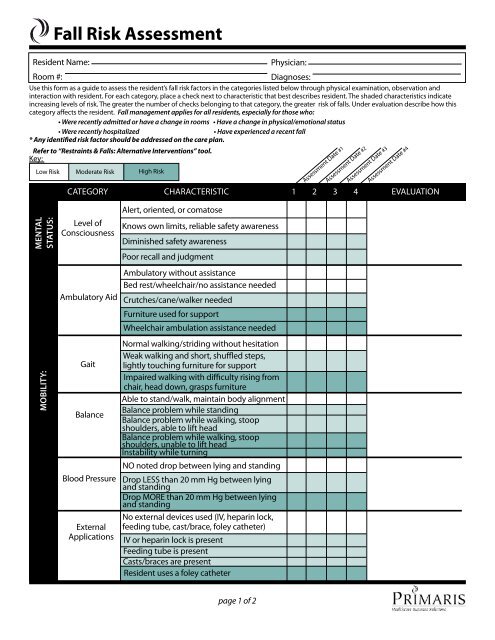The smart Trick of Dementia Fall Risk That Nobody is Talking About
Wiki Article
Everything about Dementia Fall Risk
Table of ContentsThe Only Guide to Dementia Fall RiskThe Main Principles Of Dementia Fall Risk What Does Dementia Fall Risk Mean?Not known Details About Dementia Fall Risk
An autumn danger analysis checks to see just how most likely it is that you will certainly drop. The analysis generally consists of: This consists of a collection of inquiries about your general health and wellness and if you have actually had previous falls or troubles with equilibrium, standing, and/or walking.Interventions are recommendations that might decrease your threat of dropping. STEADI consists of 3 steps: you for your danger of falling for your risk factors that can be improved to attempt to protect against drops (for instance, equilibrium troubles, damaged vision) to reduce your risk of falling by making use of efficient approaches (for instance, offering education and resources), you may be asked numerous concerns consisting of: Have you dropped in the past year? Are you fretted about dropping?
You'll sit down once more. Your company will certainly check how much time it takes you to do this. If it takes you 12 secs or even more, it may imply you go to higher risk for an autumn. This test checks toughness and balance. You'll rest in a chair with your arms crossed over your chest.
The placements will certainly get more challenging as you go. Stand with your feet side-by-side. Relocate one foot midway onward, so the instep is touching the huge toe of your other foot. Move one foot completely in front of the various other, so the toes are touching the heel of your various other foot.
The Dementia Fall Risk Diaries
A lot of falls occur as an outcome of multiple contributing aspects; as a result, taking care of the threat of dropping begins with identifying the variables that add to fall risk - Dementia Fall Risk. Some of one of the most relevant threat factors include: History of previous fallsChronic clinical conditionsAcute illnessImpaired stride and balance, reduced extremity weaknessCognitive impairmentChanges in visionCertain risky medications and polypharmacyEnvironmental factors can additionally raise the threat for falls, including: Inadequate lightingUneven or harmed flooringWet or unsafe floorsMissing or harmed handrails and order barsDamaged or poorly fitted equipment, such as beds, wheelchairs, or walkersImproper usage of assistive devicesInadequate supervision of the people residing in the NF, including those that display hostile behaviorsA effective autumn danger management program requires a detailed medical assessment, with input from all participants of the interdisciplinary team

The care plan need to additionally consist of interventions that are system-based, such as those that promote a secure atmosphere (appropriate illumination, handrails, grab bars, and so on). The efficiency of the interventions need to be reviewed regularly, and the care strategy revised as needed to mirror modifications in the fall threat evaluation. Implementing a loss danger administration system using evidence-based ideal method can reduce the frequency of falls in the NF, while restricting the potential for fall-related injuries.
Some Known Questions About Dementia Fall Risk.
The AGS/BGS standard recommends screening all grownups matured 65 years and older for loss risk every year. This testing includes asking individuals whether they have actually fallen 2 or more times in the past year or looked for clinical attention for an autumn, or, if they have actually not dropped, whether they feel unsteady when strolling.People that have fallen as soon as without injury must have their equilibrium and gait reviewed; those with gait or balance problems should receive extra analysis. A background of 1 loss without injury and without gait or balance problems does not call for more assessment past ongoing yearly loss threat testing. Dementia Fall Risk. A loss risk evaluation is needed as part of the Welcome to Medicare assessment

The Definitive Guide for Dementia Fall Risk
Recording a drops background is one of the quality signs for autumn prevention and monitoring. A critical component of threat evaluation is a medicine testimonial. Numerous classes of drugs increase fall risk (Table 2). Psychoactive medicines specifically are independent predictors of falls. These medicines have a tendency to be sedating, modify the sensorium, and hinder equilibrium and stride.Postural hypotension can frequently be relieved by minimizing the dosage of blood pressurelowering medicines and/or stopping medications that have orthostatic hypotension as a side result. Use of above-the-knee support pipe and sleeping with the head of the bed boosted may likewise lower postural reductions in blood pressure. The recommended aspects of a fall-focused physical exam are shown in Box 1.

A TUG time greater than or equivalent to 12 seconds recommends high fall danger. Being unable to stand up from a chair of knee height without utilizing one's arms indicates enhanced fall risk.
Report this wiki page